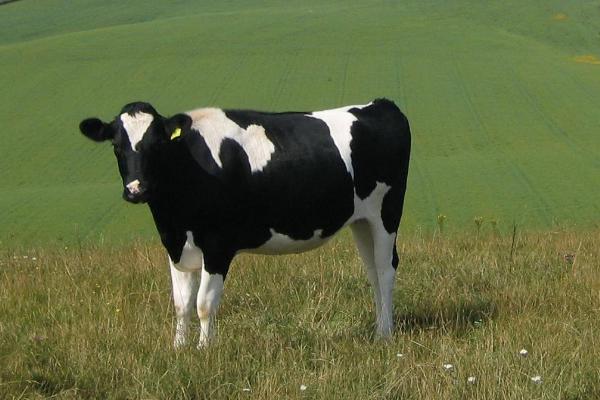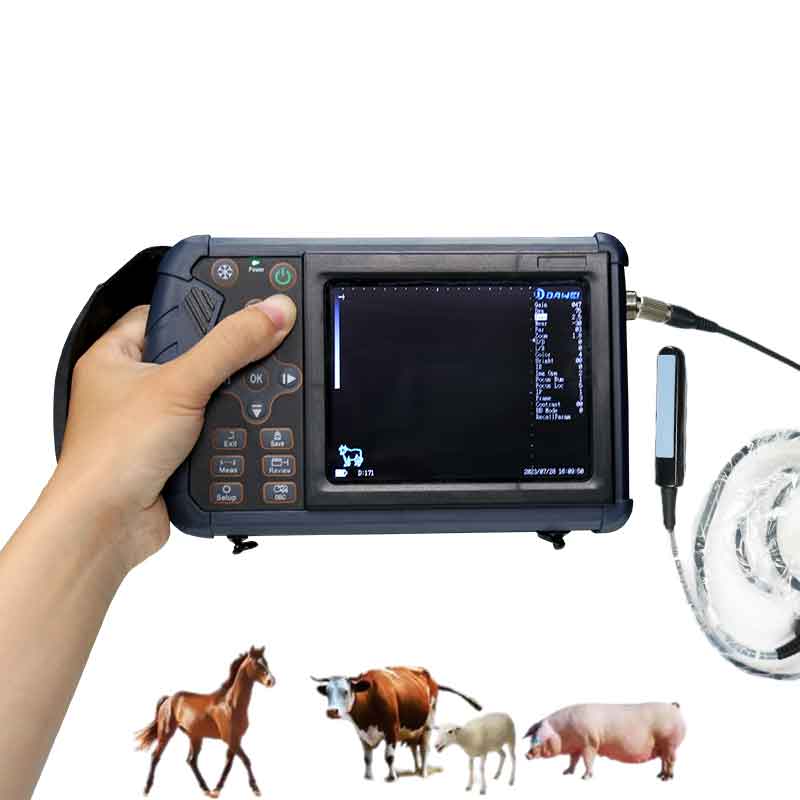Why Ultrasound Frequency Matters for Cattle
Ultrasound technology is a cornerstone of modern veterinary medicine, especially for cattle health management. The probe frequency directly impacts image quality, diagnostic accuracy, and the ability to assess specific tissues.
Penetration vs. Resolution: Lower frequencies (e.g., 2–3.5 MHz) penetrate deeper tissues (e.g., liver, uterus in late-stage pregnancy) but offer lower resolution. Higher frequencies (5–7.5 MHz) provide detailed images of superficial structures (e.g., muscle, early-stage embryos) but lack depth.
Diagnostic Goals: For pregnancy checks, a mid-range frequency (3.5–5 MHz) balances depth and clarity. For musculoskeletal issues, higher frequencies capture tendon or joint details.
Animal Welfare: Incorrect frequency settings can lead to misdiagnosis, delaying treatment and affecting herd productivity.
Factors Influencing Frequency Selection
Veterinarians consider multiple variables when choosing the optimal ultrasound probe frequency for cattle:
Body Condition and Size:
Larger or obese cattle require lower frequencies to penetrate thick fat layers.
Calves or lean breeds may benefit from higher frequencies.
Target Organ or Tissue:
Reproductive Exams: Early pregnancy (<30 days) demands high-resolution imaging (5–7.5 MHz). Later stages use lower frequencies.
Musculoskeletal Scans: Superficial tendons or ligaments need 7.5+ MHz for precision.
Probe Type and Technology:
Linear probes excel for superficial scans; convex probes suit deeper abdominal exams.
Advanced systems allow real-time frequency adjustments.
Environmental Factors:
Cold weather may stiffen tissues, requiring slight frequency tweaks.
Hair or dirt on the skin can interfere, necessitating higher frequencies for clarity.
Practical Tips for Frequency Adjustment
Veterinarians follow these best practices to optimize ultrasound settings:
Start with Default Recommendations:
Use manufacturer guidelines for common cattle applications (e.g., 3.5 MHz for general pregnancy checks).
Adjust Based on Feedback:
If images are grainy, increase frequency for resolution.
If structures appear incomplete, lower frequency for deeper penetration.
Use Coupling Agents:
Apply ultrasound gel generously to eliminate air gaps, improving signal transmission.
Combine with Other Settings:
Adjust gain, depth, and focus alongside frequency for optimal imaging.
Train Farm Staff:
Educate handlers on proper cattle positioning to minimize probe movement and artifacts.
Expanding Applications: Beyond Basic Diagnostics
Modern ultrasound frequency strategies are evolving to address new challenges in cattle health:
Metabolic Disorder Detection: High-frequency probes monitor liver fat content in dairy cows.
Fetal Sexing: Advanced high-res probes (10+ MHz) enable early gender determination in beef cattle.
Precision Livestock Farming: Portable ultrasound devices with AI-driven frequency adjustments streamline herd management.
Dawei S1 Bovine Ultrasound Machine
Future of Bovine Ultrasound Technology
Innovations like multi-frequency probes and 3D imaging are revolutionizing cattle diagnostics. Veterinarians can now switch frequencies mid-scan or overlay data from different depths, enhancing decision-making for complex cases like twin pregnancies or abscesses.
Post time: Apr-17-2025





